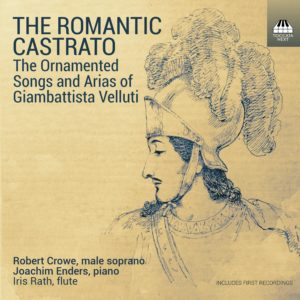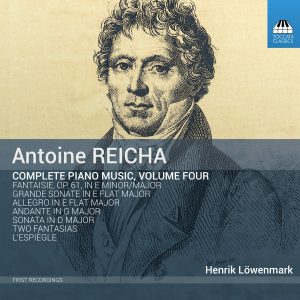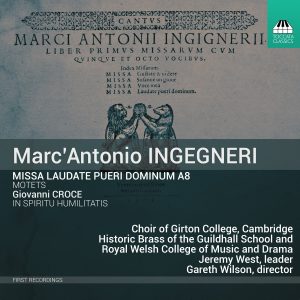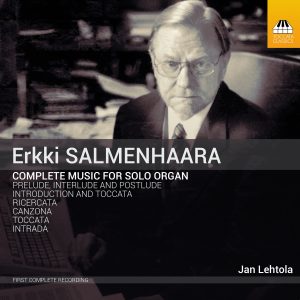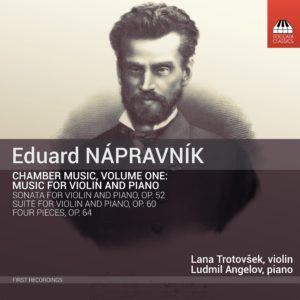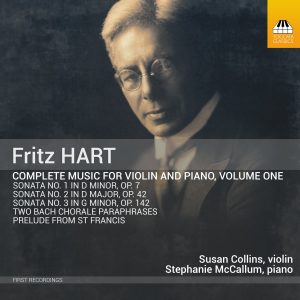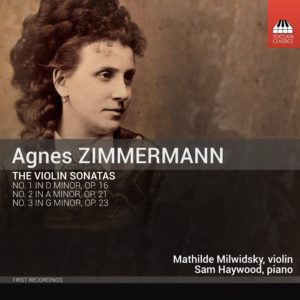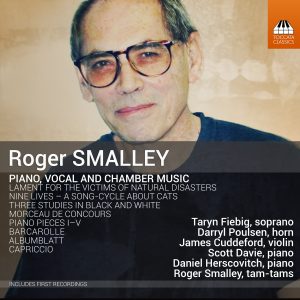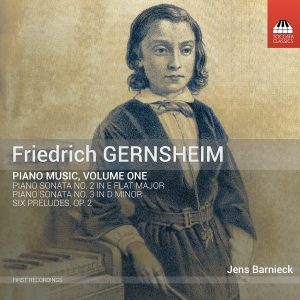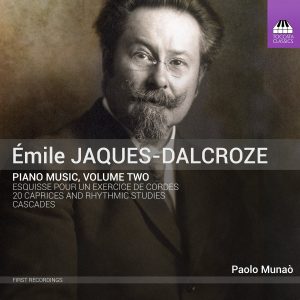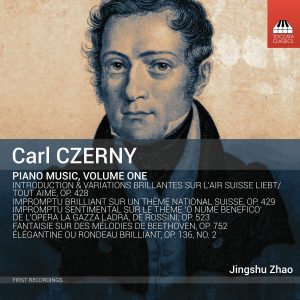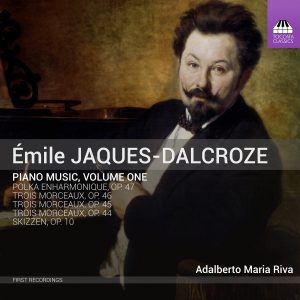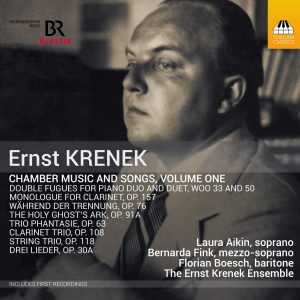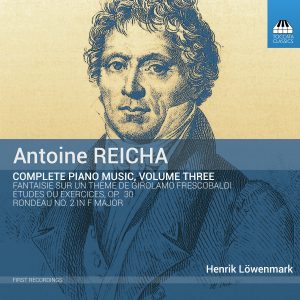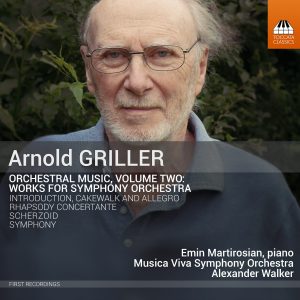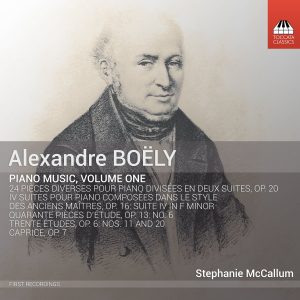Search Results for "obras de william makepeace thackeray" – Page 9
Showing results for operas william magpies teacher
The Romantic Castrato
Giovanni Battista Velluti (1780–1861) was one of the last of the larger-than-life castrati who had dominated operatic life in the seventeenth and eighteenth centuries. Velluti, though, spent his career almost entirely in the Romantic era, singing the music of his day. His style of ornamentation attracted widespread admiration and set the standard for the prime donne who were emerging as the stars of their age in operas by such composers as Rossini, Bellini and Donizetti. Here the American male soprano Robert Crowe recreates Velluti’s extraordinary sound-world, in a recording that helps explain why such diverse luminaries as Stendhal, Mary Shelley and the Duke of Wellington admired Velluti as one of the most accomplished and inventive singers of his time.
Robert Crowe, male soprano
Iris Rath, flute (Track 21)
Joachim Enders, piano
ALL EXCEPT * FIRST RECORDINGS
Antoine REICHA: Complete Piano Music, Volume Four
The piano music of the Czech-born composer Antoine Reicha (1770–1836) – friend of Haydn and Beethoven, teacher of Berlioz, Liszt and Franck – has only recently begun to be discovered. He was an important influence on composers of the next generation but until the last few years his piano works remained almost completely unknown. Encompassing Baroque practices as well as looking forward to the twentieth century, they are full of harmonic and other surprises that show this liveliest of musical minds at work. In this fourth volume of his survey of Reicha’s piano music Henrik Löwenmark sandwiches a number of quixotic miniatures between two grand but idiosyncratic sonatas.
Henrik Löwenmark, piano
Marc’Antonio Ingegneri: Missa Laudate pueri Dominum
The Cremonese composer Marc’Antonio Ingegneri (c. 1535/36–92) is chiefly remembered as the teacher of Claudio Monteverdi while, for well nigh 500 years, his own achievements were left to sit in the shadows. This pioneering recording reveals Ingegneri to have been one of the masters of his age, writing music of breathtaking richness and beauty: the polychoral works heard here combine learned, intricate counterpoint with the kind of sheer sonic thrill that brings a shiver of physical excitement.
Choir of Girton College, Cambridge
Historic Brass of the Guildhall School and Royal Welsh College of Music and Drama
Jeremy West, leader
James Mitchell and Wayne Weaver, organ
Gareth Wilson, director
First recordings
Erkki SALMENHAARA: Complete Music for Organ Solo
As composer, musicologist and critic, Erkki Salmenhaara (1941–2002) was one of the major figures in Finnish musical life in the second half of the twentieth century. His music for organ charts his stylistic evolution, from a modernism influenced by his teacher, György Ligeti, to triadic harmonies spiced with dissonance. Even so, all these works manifest his fondness for the ability of the organ to generate massive and powerful blocks of sound, giving this music a monumental character in keeping with the grand spaces of the buildings in which it is usually heard.
Jan Lehtola, organ of Turku Cathedral
Eduard NÁPRAVNÍK: Chamber Music, Volume One: Music for Violin and Piano
The Czech-born Eduard Nápravník (1839–1916) became one of the pivotal figures in the musical life of nineteenth-century Russia: as conductor of the Imperial Mariinsky Opera in St Petersburg, he gave the premieres of some of the most important Russian operas, among them Musorgsky’s Boris Godunov, six by Tchaikovsky and nine by Rimsky-Korsakov. But his own music has largely been lost from sight – a fate it emphatically does not deserve, as these three works for violin and piano prove: big-hearted and big-boned, replete with passionate Tchaikovskian melody, they reveal a composer ripe for rediscovery.
Lana Trotovšek, violin
Ludmil Angelov, piano
First Recordings
Fritz HART: Complete Music for Violin and Piano, Volume One
The composer and conductor Fritz Hart (1874–1949) led a peripatetic life: London-born, he moved to Australia to tour travelling productions of musicals there and in New Zealand. He soon became a formative figure in Australian musical life as teacher and conductor, but in 1936 left to become the first professor of music at the University of Hawai‘i and permanent conductor of the Honolulu Symphony Orchestra. Hart‘s three violin sonatas – poised but passionate – reveal a musical language influenced by Debussyan Impressionism but also coloured by his own Celtic roots.
Stephanie McCallum, piano
Susan Collins, violin
Agnes Zimmermann: The Violin Sonatas
Born in Cologne, Agnes Zimmermann (1847–1925) settled in London as a child. She made her concert debut in 1863, playing the ‘Emperor’ Concerto, and was soon celebrated as one of Europe’s more important pianists, her partners in chamber music including Clara Schumann, Joseph Joachim, Alfredo Piatti and Wilma Neruda, Lady Hallé. She enjoyed a reputation also as teacher, music editor and composer. At the centre of her modest output of compositions are three substantial violin sonatas. Dramatic and lyrical by turn, and always beautifully crafted, they lie somewhere between Mendelssohn and Brahms, but demonstrate an impressively personal musical voice.
Mathilde Milwidsky, violin
Sam Haywood, piano
FIRST RECORDINGS
Roger SMALLEY: Piano, Vocal and Chamber Music
Roger Smalley (1943–2015) made his mark, first in his native Britain and then in Australia, as composer, pianist, conductor, writer, academic and teacher. Although as performer and commentator he was at the forefront of musical modernism, he was also very fond of nineteenth-century Romanticism, and much of his music bridges the gap between old and new, retaining its roots in the past while reflecting the concerns of his own time, as the works on this album demonstrate.
Taryn Fiebig, soprano (Tracks 2–10)
Darryl Poulsen, horn (Tracks 22)
James Cuddeford, violin (Tracks 11)
Daniel Herscovitch, piano (Track 1)
Scott Davie, piano (Tracks 2–10)
Roger Smalley, tam-tams (Track 22)
Friedrich Gernsheim: Piano Music, Volume One
Friedrich Gernsheim (1839–1916), born in Worms, on the Rhine, grew up to be one of the most formidable musicians of his age: composer, pianist, conductor and teacher. Even as a teenager, Gernsheim was attracting attention as a virtuoso-composer, earning comparisons with Mozart. These two early piano sonatas – restored by Jens Barnieck from Gernsheim’s manuscripts – combine youthful freshness with praeternatural assuredness, showing awareness of Schumann and anticipating Brahms. By the time of the Six Preludes, written a decade later, Chopin has become the dominant star in Gernsheim’s firmament.
Jens Barnieck
Émile Jaques-Dalcroze Piano Music, Volume Two
The Swiss composer Émile Jaques-Dalcroze (1865–1950) is best remembered for his development of Eurhythmics, which teaches the appreciation of music through movement. But Jaques-Dalcroze, who studied with Delibes and Fauré in Paris and with Bruckner and Fuchs in Vienna, was a considerable composer in his own right, with operas, cantatas and orchestral works among his substantial output. His 20 Caprices and Rhythmic Studies constitute an important but hitherto unknown set of character-studies, combining a relaxed lyricism with technical challenges of considerable subtlety for the player.
Notes en Français
Paolo Munaò, piano
Carl CZERNY: Piano Music, Volume One
The Viennese-born Carl Czerny (1791–1857) is best remembered for his countless pedagogical studies, hundreds and hundreds of them. But Czerny’s astonishing fecundity – his opus numbers go up to 861, but there is much more music than that – has served to obscure the fact that he was an important composer in his own right, his works forming a link between Beethoven (his teacher) and Liszt (his student), between the Classical and Romantic eras. The pieces recorded here, all for the first time, reflect the brilliance of his own playing and were intended to impress the salons of Biedermeyer Vienna.
Jingshu Zhao, piano
Émile Jaques-Dalcroze: Piano Music, Volume One
The Swiss composer Émile Jaques-Dalcroze (1865–1950) is best remembered for his development of Eurhythmics, which teaches the appreciation of music through movement. But Jaques-Dalcroze, who studied with Delibes and Fauré in Paris and with Bruckner and Fuchs in Vienna, was a composer of considerable stature in his own right, with operas, cantatas and orchestral works among his substantial output. These piano works, all written in the 1890s, are generally lighter in style, showing the influence of Schumann and the salons of Paris.
Adalberto Maria Riva, piano
Ernst Krenek: Chamber Music and Songs, Volume One
This recording of music by Ernst Krenek (1900–91) covers almost half a century of his compositions, and shows the sheer range of his creativity: from early piano fugues written for his teacher, Franz Schreker, via elegant fin de siècle Viennese lyricism to a relaxed application of Schoenberg’s dodecaphonic technique – often enlivened with a surprising degree of charm and a knowing sense of humour.
Laura Aikin, soprano (Tracks 2 – 4)
Bernarda Fink, mezzo-soprano (Track 7)
Florian Boesch, baritone (Track 7)
The Ernst Krenek Ensemble
Matthias Schorn, clarinet (Tracks 2 – 4)
Hanna Weinmeister, violin (Tracks 2 – 6)
Christian Eisenberger, violin (Tracks 2 – 4, 8 – 9)
Tatjana Masurenko, viola (Tracks 11 – 15)
Dorothea Schönwiese, cello (Tracks 2 – 6)
Anthony Spiri, piano (Tracks 1, 5 – 9, 21)
with Herbert Maderthaner, oboe (Track 10)
Lily Francis, viola (Tracks 2 – 4, 10)
Nina Tichman, piano (Tracks 1, 21)
Antoine Reicha: Complete Piano Music, Volume Three
The piano music of the Czech-born composer Antoine Reicha (1770–1836) – friend of Haydn and Beethoven, teacher of Berlioz, Liszt, Franck and many others – is one of the best-kept secrets in music. He was an important influence on composers of the next generation but, apart from an innovative set of fugues, his piano works have remained almost unknown since his own day. Encompassing Baroque practices as well as looking forward to the twentieth century, they are full of harmonic and other surprises that show this liveliest of musical minds at work. Reicha’s twenty Études ou Exercices, recorded here for the first time, manage to combine his maverick inventiveness with a considerable degree of charm.
Henrik Löwenmark, piano
Arnold Griller: Orchestral Music, Volume Two
The composer Arnold Griller (b. 1937), son of the violinist Sidney Griller, grew up in London, surrounded by some of the world’s best-known musicians. In spite of this propitious beginning to his career, his considerable output remains largely unknown. This second volume of orchestral pieces presents four major works, not least Griller’s only symphony. His music is highly individual: it absorbs a number of disparate influences, not least Milhaud (his main teacher) and late Stravinsky, shows an occasional touch of the surreal and the bizarre, and infuses the result with radiant lyricism, edgy humour and restless energy..
Emin Martirosian, piano
Musica Viva Symphony Orchestra
Alexander Walker, director
Alexandre Boëly: Piano Music, Volume One
Alexandre Boëly (1785–1858) is best remembered as a member of the long French tradition of organist-composers. His piano music, by contrast, is as good as unknown, and yet it is an important link between the Baroque and Classical worlds of eighteenth-century France and the emerging Romanticism of the nineteenth. This recording, on an Érard piano from 1853, highlights both its Classical poise and its Romantic charm, revealing Boëly as a forerunner of composers like Saint-Saëns, whom he taught, as well as other piano pioneers such as Alkan, Chopin and Liszt, all of whom this prominent Parisian musician and teacher may well have known personally.
Stephanie McCallum, piano (Érard, Paris, 1853)
Stay In the Know
JOIN THE TOCCATA NEWSLETTER
"*" indicates required fields
By visiting our site, you agree to our privacy policy regarding cookies, tracking statistics, etc.
